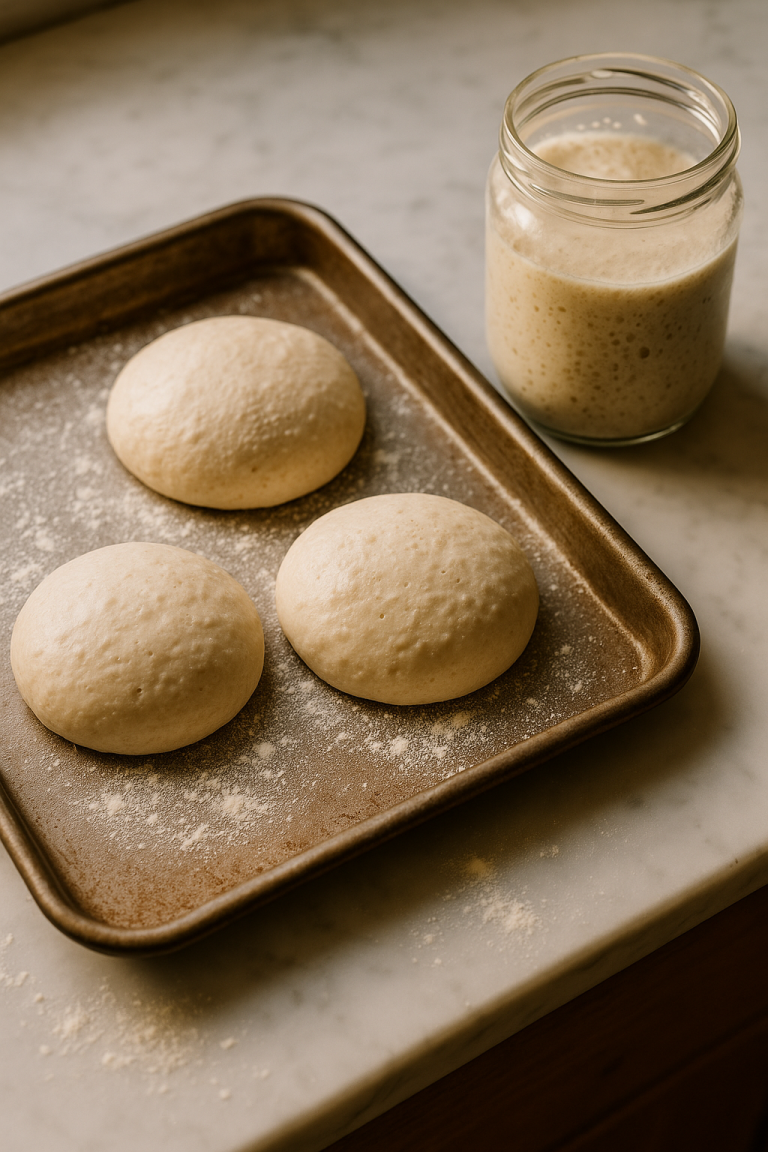How to Dry Brine (And Why It Changes Everything)
Dry brining is just salt and time. No brine bucket, no mess, no complicated ingredients. Season your meat with salt ahead of time, let it sit in the fridge, and cook it. You get juicier, more flavorful, better-textured meat every time.
Chefs have been salting meat ahead of time for centuries. It’s how you get crispy-skinned roast chicken, perfectly seasoned steaks, and pork chops that stay moist instead of turning into shoe leather. The technique is simple, but the difference is real. Once you start dry brining, you won’t go back.
The science is straightforward: salt draws moisture out of the meat, dissolves into that moisture, then gets reabsorbed back into the meat along with the salt. This seasons the meat deeply—not just on the surface—and changes the protein structure so it holds onto moisture better during cooking. The surface stays dry, which means better browning and crispier skin.
What is Dry Brining?
Dry brining means salting meat ahead of time and letting it rest uncovered in the refrigerator before cooking. That’s it. You’re not soaking anything in water. You’re not making a brine solution. You’re just rubbing salt on the meat and giving it time to work.
The process:
- Salt the meat generously on all sides
- Place it uncovered in the refrigerator on a wire rack with a tray underneath
- Let it sit for anywhere from 30 minutes to 48 hours depending on the size
- Cook it without rinsing off the salt
What happens during that time:
- Salt draws moisture out of the meat through osmosis
- Salt dissolves in that surface moisture, creating a concentrated brine
- The brine gets reabsorbed back into the meat through reverse osmosis
- The salt penetrates deep into the muscle fibers, seasoning the meat throughout
- The proteins in the meat denature slightly, which helps them hold onto water during cooking
- The surface dries out, which improves browning and crisps the skin
The result is meat that’s seasoned all the way through (not just on the surface), stays juicier during cooking, and develops better texture and color.
Dry Brine vs. Wet Brine
Wet brining (soaking meat in saltwater) works, but it has downsides:
- Takes up a lot of fridge space (you need a container big enough to submerge the meat)
- Makes a mess
- Can make the meat taste watery or spongy
- The surface stays wet, which means less browning
Dry brining is simpler:
- No bucket, no liquid, no mess
- Takes up minimal fridge space
- Better browning because the surface dries out
- More concentrated flavor
For most home cooking, dry brining is better. The only time wet brining might be preferred is for very lean meats that need extra moisture (like turkey breast), but even then, dry brining works fine.
How to Dry Brine
Step 1. Calculate the salt. Use 1/2 to 3/4 teaspoon of kosher salt per pound of meat. This is the right amount for proper seasoning without over-salting.
Examples:
- 4-pound chicken = 2 to 3 teaspoons kosher salt
- 1-pound steak = 1/2 to 3/4 teaspoon kosher salt
- 2-pound pork tenderloin = 1 to 1.5 teaspoons kosher salt
Important: Use kosher salt, not table salt. Kosher salt has larger crystals and is less salty by volume. If you only have table salt, use half the amount.
Step 2. Season the meat. Pat the meat dry with paper towels. Sprinkle the salt evenly over all surfaces. Use your hands to rub it in gently so it adheres. Don’t be shy—cover the whole surface.
Step 3. Refrigerate uncovered. Place the meat on a wire rack set over a sheet pan (this allows air circulation). Put it in the refrigerator uncovered. The uncovered part is critical—air circulation dries out the surface, which gives you better browning and crispier skin.
Step 4. Wait. Let the meat sit in the fridge for the appropriate amount of time based on its size and type. See timing chart below.
Step 5. Cook. Remove the meat from the fridge 30-60 minutes before cooking (for large roasts) to take the chill off. Pat the surface dry with paper towels if there’s any moisture. Do not rinse off the salt. Cook as you normally would.
How Long to Dry Brine
The timing depends on the size and type of meat:
Fish (salmon, halibut, swordfish): 15-30 minutes
- Don’t go longer or the texture will get mushy
Thin cuts (chicken breasts, pork chops, thin steaks): 1-4 hours
- Minimum 1 hour for noticeable improvement
- 4 hours is ideal
Thick cuts (whole chicken, pork tenderloin, thick steaks): 12-24 hours
- 12 hours minimum
- 24 hours is ideal
Large roasts (turkey, prime rib, pork shoulder): 24-48 hours
- The bigger the roast, the longer it needs
- 48 hours is ideal for a 12-15 pound turkey
General rule: The thicker the meat, the longer it needs. For anything under 1 inch thick, 1-4 hours is enough. For anything over 1 inch thick, go for 12-24 hours.
What Proteins Benefit Most
Poultry (Most Benefit)
- Whole chicken (12-24 hours) – This is where dry brining shines. Crispy skin, juicy meat, seasoned all the way through.
- Chicken thighs (4-12 hours) – Even for braised dishes like Coq au Vin, dry brining improves flavor.
- Turkey (24-48 hours) – This is THE technique for perfect Thanksgiving turkey.
- Duck breast (2-4 hours) – Helps render fat and crisp the skin.
Pork (Excellent Benefit)
- Pork chops (1-4 hours) – Prevents dry, tough chops. Makes cheap pork taste expensive.
- Pork tenderloin (4-8 hours) – Lean cut that desperately needs moisture retention.
- Pork roasts (12-24 hours) – Keeps them juicy and well-seasoned.
Beef (Moderate Benefit)
- Steaks (1-4 hours for thin, 12-24 hours for thick) – Better crust, more even seasoning.
- Beef roasts (24-48 hours) – Essential for prime rib, beef tenderloin, tri-tip.
- Beef for stews (2-4 hours) – Less critical since it’s braised, but adds flavor.
Fish (Selective Benefit)
- Thick, firm fish only (salmon, halibut, swordfish, tuna) – 15-30 minutes. Firms up texture.
- Thin or delicate fish (sole, flounder, trout) – Don’t dry brine. Too delicate.
Common Mistakes and How to Avoid Them
Mistake 1. Using too much salt. If you over-salt, the meat will taste like a salt lick. Stick to the ratio: 1/2 to 3/4 teaspoon kosher salt per pound. If you’re not sure, err on the side of less.
Mistake 2. Not waiting long enough Dry brining needs time to work. 30 minutes isn’t enough for a whole chicken. Give it at least 12 hours. If you’re short on time, even 2-3 hours is better than nothing, but you won’t get the full benefit.
Mistake 3. Covering the meat. Don’t cover the meat with plastic wrap or foil. The surface needs to dry out for better browning. Leave it uncovered in the fridge.
Mistake 4. Rinsing off the salt. Don’t rinse the meat before cooking. The salt has been absorbed—what’s on the surface is minimal and necessary for flavor. If you rinse it off, you wash away the seasoning.
Mistake 5. Using table salt instead of kosher salt Table salt is much saltier by volume because the crystals are smaller and pack more densely. If you use table salt at the same measurement as kosher salt, you’ll over-salt. Use half the amount if you only have table salt.
Mistake 6. Dry brining fish too long Fish is delicate. 15-30 minutes is the max. Any longer and the texture turns mushy as the salt breaks down the proteins too much.
FAQ
No. The salt has been absorbed into the meat. What’s left on the surface is minimal and necessary for flavor. Rinsing washes away the seasoning.
Yes, but do it right before cooking, not during the dry brine. The dry brine should be just salt. Add herbs, spices, and aromatics when you’re ready to roast. If you add them too early, they can draw out moisture or create off flavors.
No. The meat needs to be thawed first. Dry brining on frozen meat doesn’t work because the salt can’t penetrate the surface.
You can place the meat directly on a plate. It’s not ideal because air can’t circulate underneath, but it still works. Just flip the meat halfway through if possible.
You can, but it’s not ideal. The surface won’t dry out as well, which means less crispy skin and less browning. If you must cover it (for example, if you’re worried about fridge odors), use a loosely draped paper towel instead of plastic wrap.
It makes meat properly seasoned, not overly salty. The salt penetrates throughout the meat instead of sitting on the surface, so every bite tastes seasoned. If you’re worried, start with the lower end of the range (1/2 teaspoon per pound) and adjust next time.
For most meats, 24-48 hours is safe. Beyond that, the texture can start to change (the meat can become too firm or “cured”). For fish, don’t go beyond 30 minutes. For poultry and pork, 48 hours is the maximum. For beef, you can go longer (up to 3-4 days), but at that point you’re moving into dry-aging territory.
Why Dry Brining Changes Everything
Dry brining is the easiest way to level up your cooking. It requires no special equipment, no complicated technique, and no extra ingredients—just salt and time. But the difference is noticeable. Meat that’s seasoned all the way through instead of just on the surface. Juicier texture because the proteins hold onto moisture better. Crispier skin because the surface dries out.
Once you start dry brining, you’ll wonder why you ever cooked any other way. Try it once with a whole roast chicken and you’ll see what I mean.
Plan ahead. Salt your meat. Let time do the work. That’s it.






